Moto G5 Plus Review
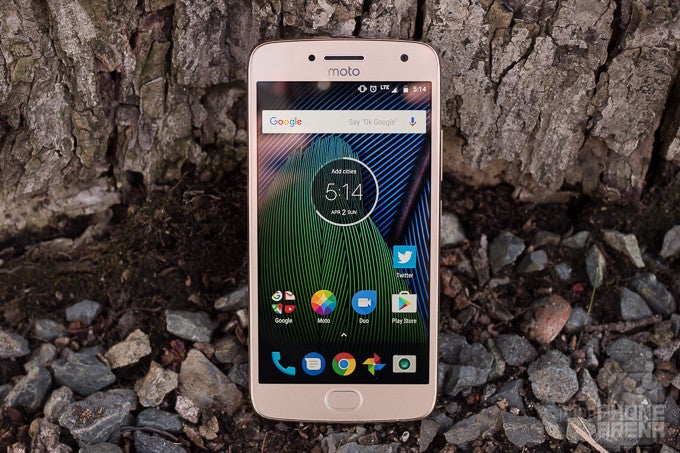
Update: You can now read our Moto G5 review!
Introduction
With the first quarter of the year wrapping up, we're finally able to start really appreciating what 2017 means for new smartphones, as some of the most anticipated high-profile flagships launch. But more than just being dazzled by a convention-breaking crop of extra-wide-display, insane screen-to-body-ratio hero phones, we've also seen the launch of some really compelling budget-priced phones, bringing users decent performance and attractive designs while costing less than half as much as top-shelf flagships.
Year after year, we look to Lenovo's Motorola brand to bring us some of the best examples of well-done budget phones, as we did late last spring with the introduction of the Moto G4 series. For 2017, Motorola's pushing up its timetable a little, and last month at MWC we were first introduced to the next generation of the Moto G, with the launch of the Moto G5 and Moto G5 Plus.
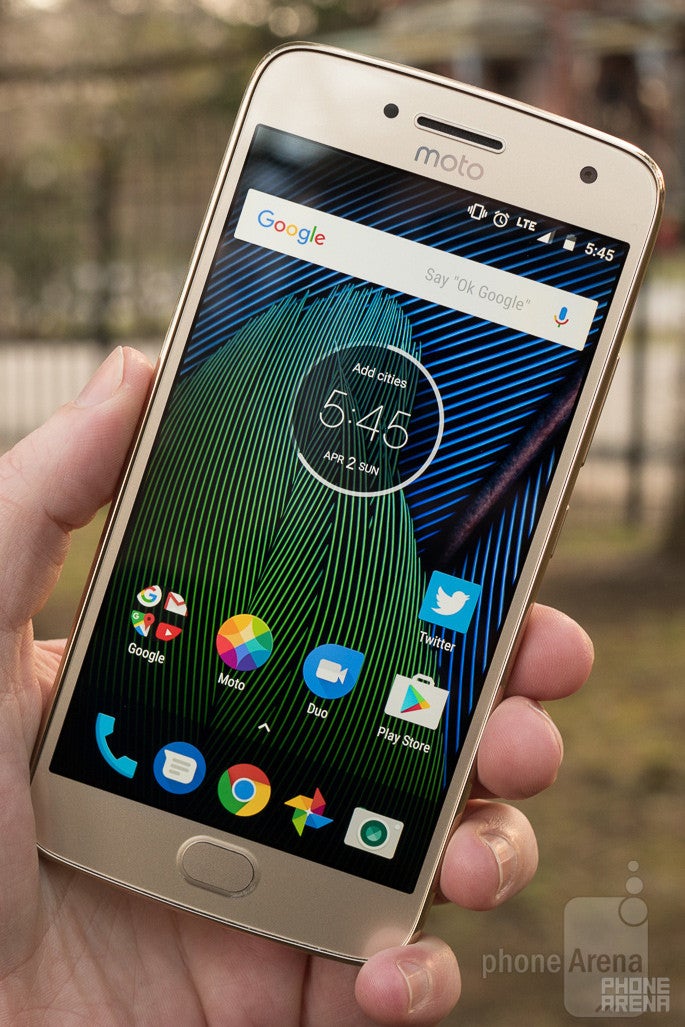
Sales of the Moto G5 Plus are now open in the US, and we've been spending the past couple weeks taking an early look at the handset. Is this affordable smartphone one you'll want to pick up? Take a gander at what we've learned.
In the box:
- Moto G5 Plus
- Turbo charger
- Micro-USB to standard-A cable
- Intro booklet
- Safety notice
Design
What a difference a year makes
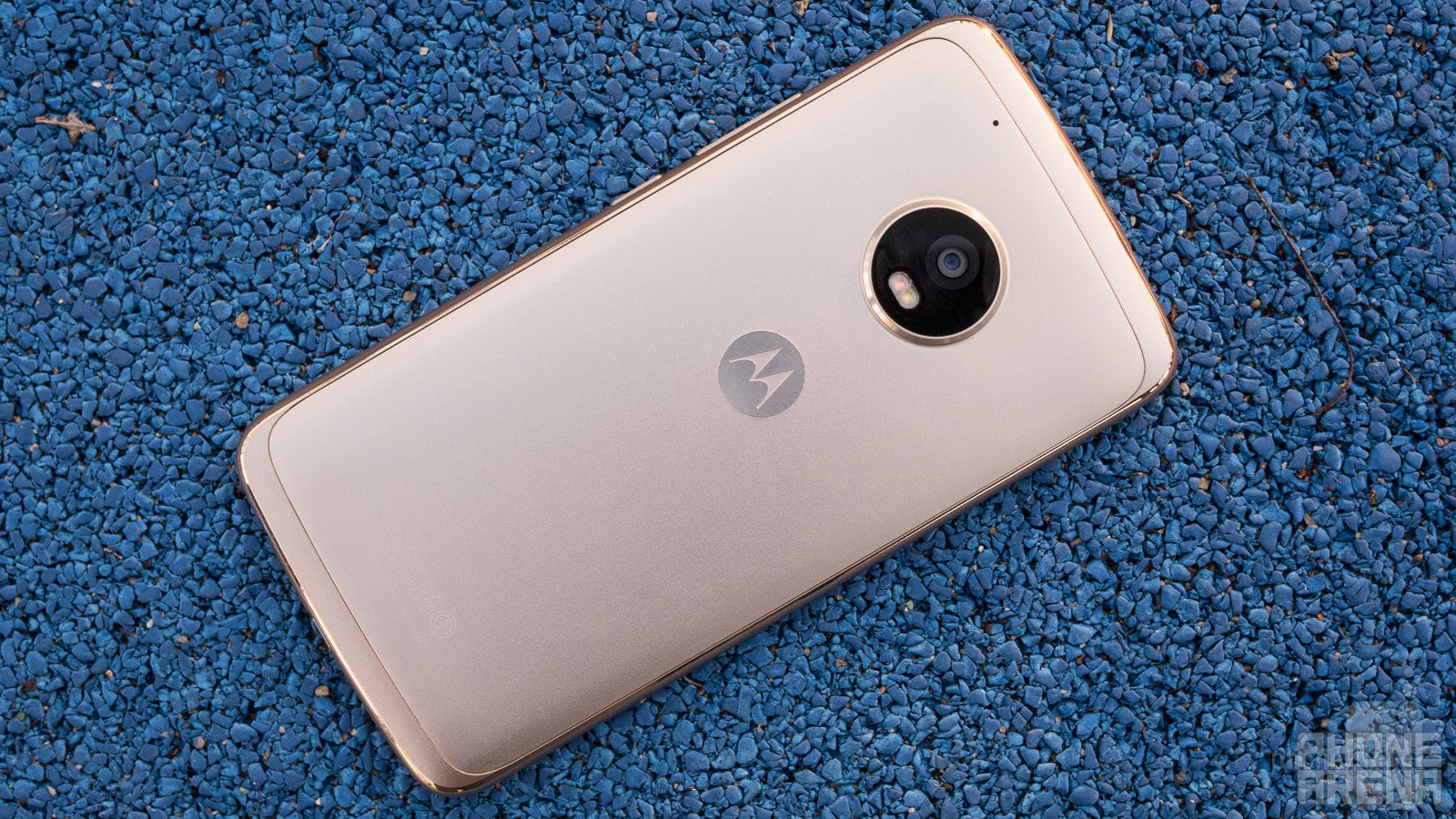
The Moto G series is one that's not afraid to reinvent itself, and recent years have brought a nice mix of variety to the phones' hardware. With the Moto G5, that evolution continues, now taking maybe one of the biggest steps forward yet.
While the Moto G4 phones risked feeling a little “cheap,” with snap-off removable plastic back panels, the Moto G5 Plus overhauls its construction with some much more premium-feeling materials. For starters, the back is no longer removable, and that plastic is ditched in favor of metal. In other phones that might represent a bit of a functionality trade-off, but it's not like the G4 had a removable battery – the only difference here is that instead of the SIM and microSD slots living under that back panel, they're now inserted via a 2-in-1 tray along the phone's top edge.
The Moto G5 Plus isn't all metal – there's still a plastic edge all around the handset – but it both looks good, with a well-done chromed-out shiny metallic finish, and feels quite nice in the hand. Really, it takes a bit of thinking to even realize that the phone's not all-metal in the first place.
Around front, the phone's glass is ever-so-slightly sunken from the surrounding frame, helping to protect the screen when placed face-down. And to the bottom we find the handset's fingerprint scanner. The scanner's also sunken, recessed beneath the model's screen glass, and while that feels a little unusual at first, we quickly got used to it. Unlike the square scanner of the G4 Plus, Motorola goes with an oval scanner on the G5 Plus, and that shape helps with some interesting gesture controls – which we'll talk more about a little later on.
There's another pretty significant design departure on the phone's back, as the linear camera arrangement of the G3 and G4 is replaced by a circular puck-style camera. There's a noticeable camera bump, to the tune of a couple millimeters, but it's not particularly severe and didn't have us second-guessing the phone's design decisions.
Overall, the design of the Moto G5 Plus is a marked improvement from the G4. There are a few areas where we wish Lenovo paid a little more attention to detail – like how the SIM/microSD tray doesn't quite sit flush with the phone's body when inserted – but overall the phone both looks and feels fancier than its price point would otherwise suggest.
On the downside, there's no Moto Maker customization options available with this generation, nor has Motorola upgraded its waterproofing; the G5 offers the same kind of water-resistant nano-coating as the G4 – enough to protect against fleeting contact with moisture, but less than a full IPX8 rating.
Display
A more compact display than the G4 delivers a bright, sharp screen
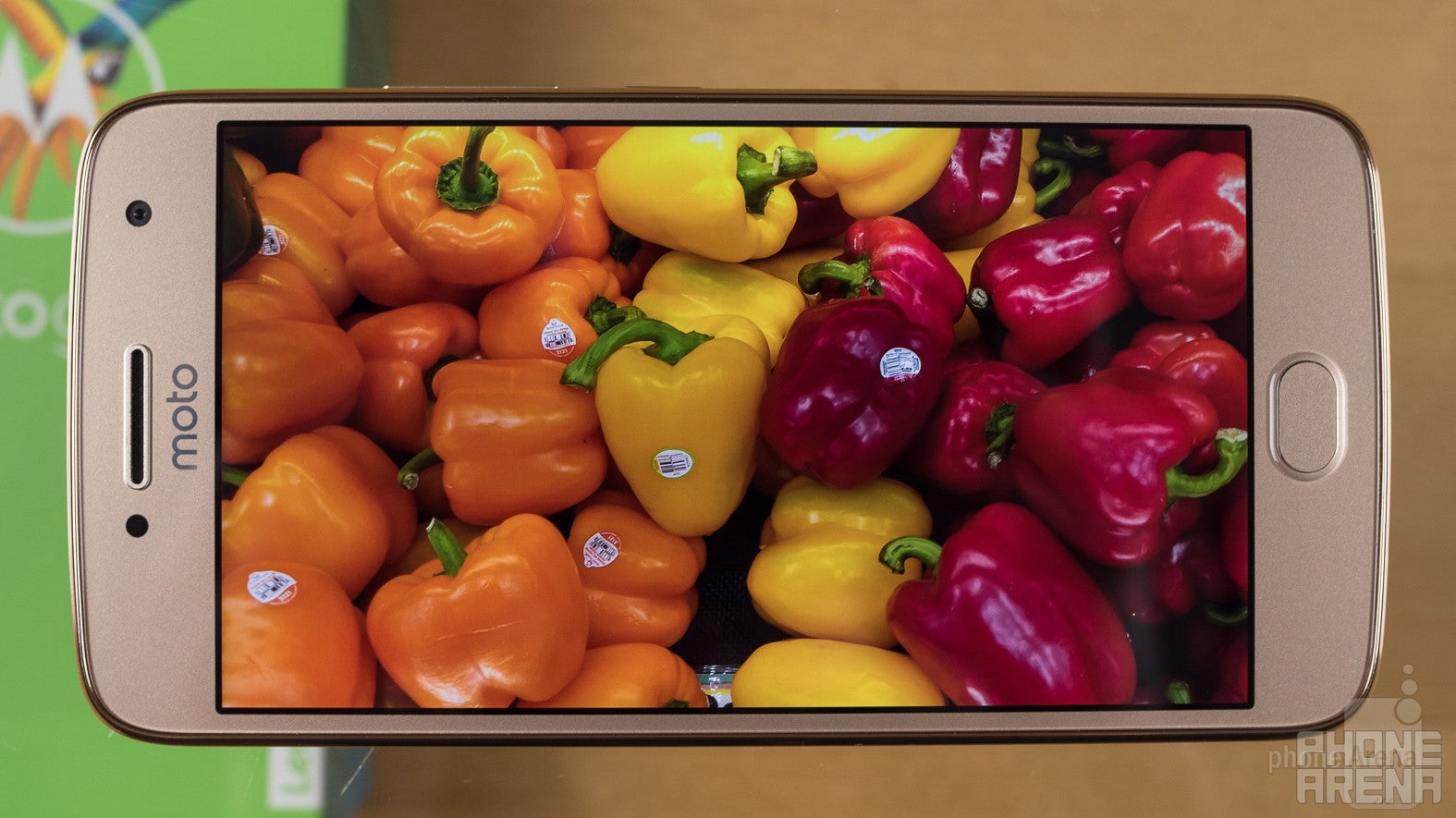
During our initial hands-on, we were quite impressed with the display on the Moto G5 Plus, and after spending quite a bit more time with the phone, we're not about to change our mind.
The first thing to know about the screen on this handset is that for a “Plus” branded phone, it's not particularly huge – the display is a modest 5.2-inch component. Its 1080 x 1920 resolution is nothing to write home about, but it's also more than sufficient for a screen this size.
Display brightness is decent – at least under manual control. Set things to auto, and it's capable of output up there close to some of the brightest phones we've seen in recent memory, though it's just a tad annoying that you can't set the phone to such brightness levels deliberately.
Color accuracy is also alright, though we noticed some non-linear output at varying levels of saturation. It's nothing that ruins image quality, though you may want to switch from the phone's standard to “vibrant” color mode if you find hues coming across a bit subdued.
The Moto Display system makes a welcome return, using motion-detection to give you convenient access to notifications when the phone is otherwise sleeping. You can further interact with those notifications by dragging them up, down, left, or right, as well as choose apps with sensitive content to withhold their notifications from this screen. It all works very well, and adds a welcome productivity-focused boost to the phone's software.
Interface and Functionality
Well-done gesture controls will have you asking, “What Android buttons?”
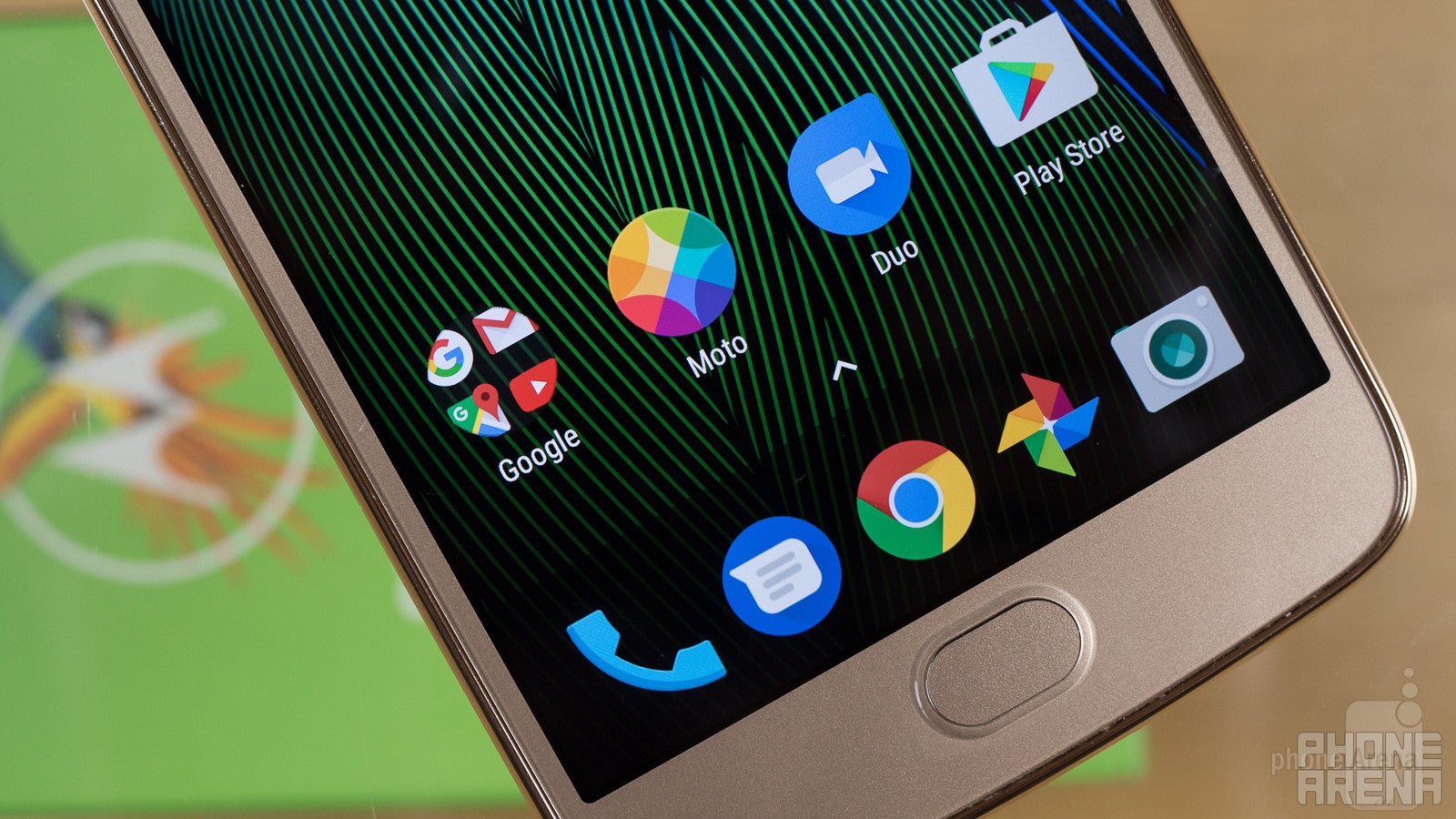
The Moto Display is far from the only stand-out feature of the Moto G5 Plus's interface, and like past Motorola phones, there's a bevy of gesture controls and shortcuts, as well. Occasionally we'll see lower-priced models dial-back on the selection that's available, but the G5 Plus suffers no such limitation: from twisting the handset to bring up the camera, to chopping for the flashlight (one of our all-time favorites), there's lots here to enhance the ways you interact with the hardware.
New for the Moto G5 Plus is another gesture-driven system that taps into the phone's capacitive fingerprint scanner. Now, we recently told you about a similar system on the Huawei P10, where the fingerprint scanner could replace the handset's on-screen Android buttons. But while Huawei's setup combined swipes and taps in a combination that took a little getting used to, the Moto implementation proved to much easier to pick up: press the sensor like normal for home, then swipe one way for back, and the other way for recent apps – you can even swap those two back and forth to choose the directions that make the most sense to you.
It's probably very different from the sort of interactions you're used to, but we found ourselves coming around to its usefulness almost immediately; there's just something so natural about swiping for “back.”
These motion and gesture controls aside, the Moto G5 Plus runs the sort of extremely lightweight skinning we know to expect from Motorola handsets, all on top of Android 7.0 Nougat. Everything ran all sorts of smoothly (at least on the 4GB RAM unit we tested), leaving us without major software complaints.
Processor and Memory
Motorola nails the balance of power-efficiency and performance

Lenovo delivers a nice upgrade over last year's G4s by giving the Moto G5 Plus a Snapdragon 625 processor. It's a bit of an older chip by now, sure, but it's also one of our absolute favorites when it comes to mid-range hardware, providing more than acceptable performance with really, really nice power efficiency.
The Moto G5 Plus doesn't let us down here, with benchmarks delivering just the sort of solid mid-range performance we'd expect from this silicon.
When you go shopping for the Moto G5 Plus, you've got one big decision to make – well, in addition to choosing the phone in gold or gray. The base level G5 Plus offers 2GB of RAM paired with 32GB storage. For $70 more, you can double both those figures to 4GB of RAM and 64GB storage – and that latter configuration is the model we tested. If you've got the cash, we'd very much suggest this higher-end arrangement, if only to give you a little more flexibility with the usage you can expect to get our of the phone. But even at 2GB/32GB, we wouldn't expect the G5 Plus to offer a significantly downgraded experience – just one that maybe relies on microSD expansion a little more, and one that reloads apps a bit more frequently.
Connectivity
For another year, Moto G phones show everyone else how you do unlocked phone sales
As an unlocked phone, as you'll pick up the Moto G5 Plus, the handset offers some fantastic band support, extending beyond the expected compatibility with AT&T and T-Mobile to also support Verizon and Sprint. We can hardly be surprised, with the Moto G4 phones offering similarly broad carrier support, but it's 19 types of awesome that this year's model doesn't stray from those expectations.
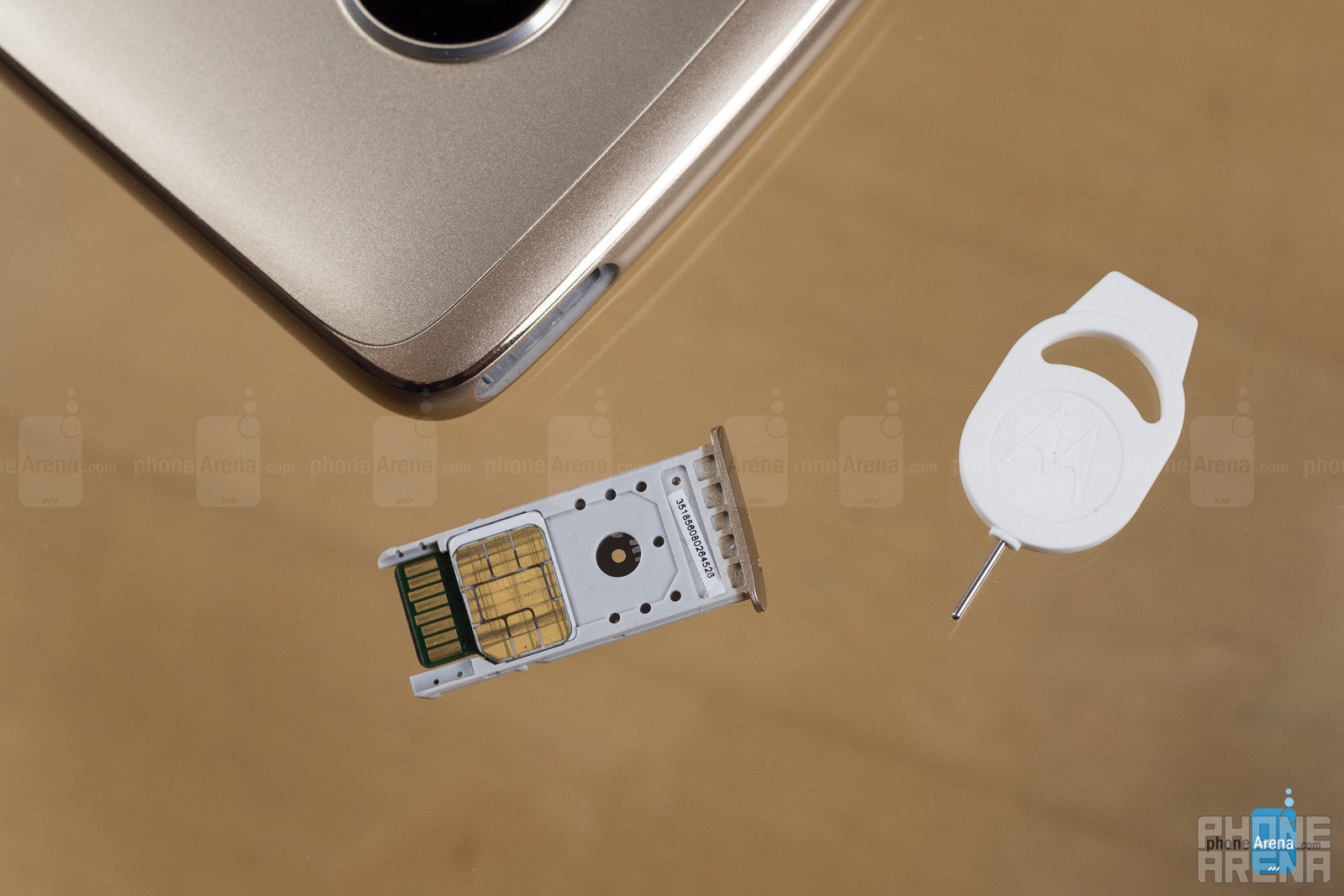
Camera
Overflowing with potential, but a hiccup here and there get in the way
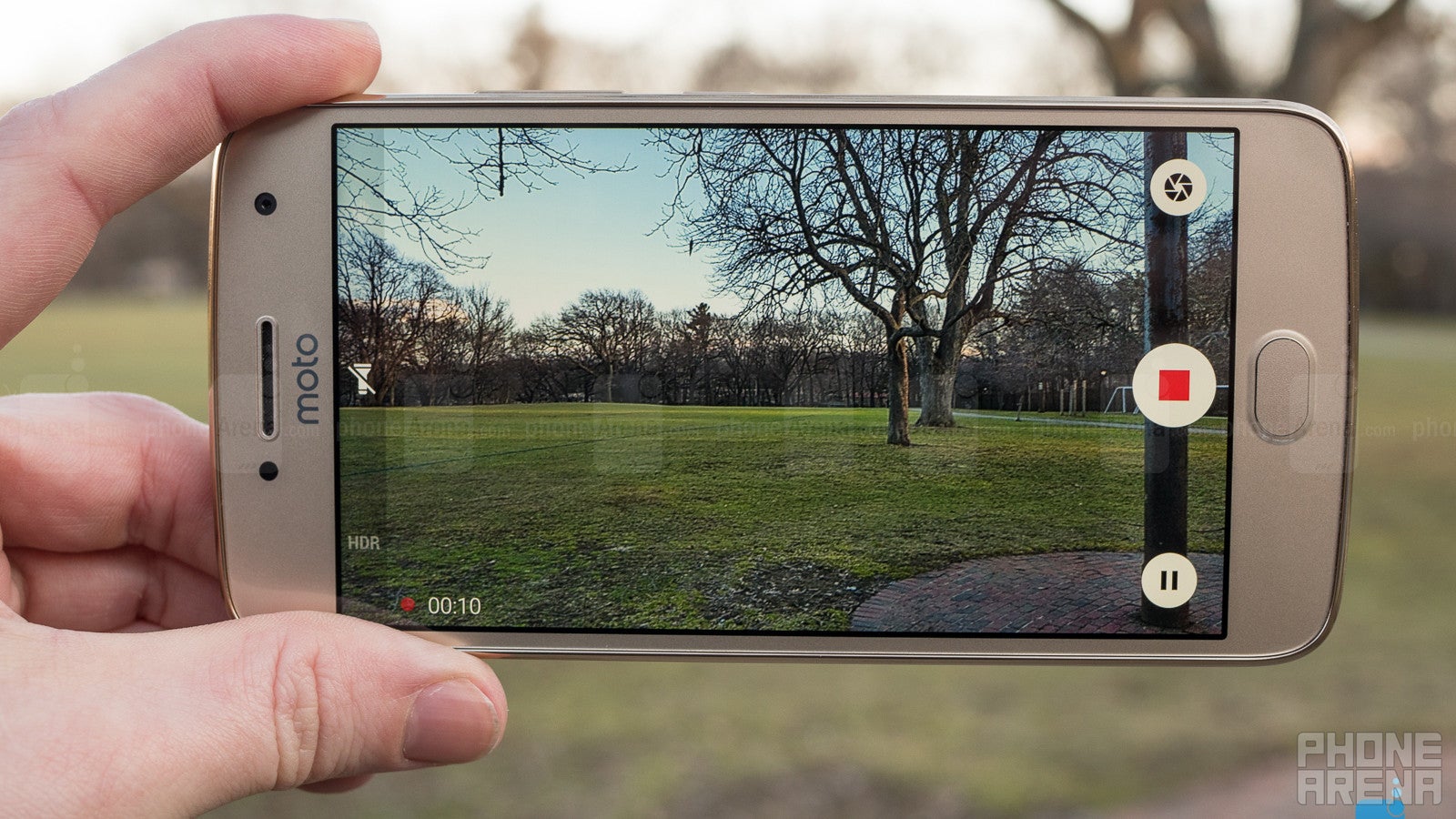
Like so many other smartphone manufacturers, Lenovo has seen the writing on the wall when it comes to hammering camera specs down shoppers' throats: raw megapixel count just doesn't matter like it used to (or did it ever?). So instead of the 16MP camera on the G4 Plus, we've got a 12MP component on the G5 Plus.
What benefits do we get to offset that resolution hit? The big one is probably dual-pixel autofocus, like we saw on last year's Galaxy S7 from Samsung. The system promises fast, accurate focus by leveraging all available pixels, rather than a subset like the G4's more traditional phase-detection autofocus.
Also like the GS7, the Moto G5 Plus's camera picks up a very wide f/1.7 aperture, bringing in copious amounts of light. Around front, the 5MP f/2.2 wide-angle camera sounds just like what we had on the G4, and instead the G5's updates arrive mainly in the form of software: a manual-setting pro mode, as well as a beautification mode.
Image quality
For a camera with so much potential, the images we snapped with the Moto G5 Plus turned out a little more inconsistent than we'd like.
The good news is that even the “bad” pics still look largely OK, but more than once we found ourselves let down by slightly out-of-focus pictures, or those with poorly set exposures. We're hopeful that a little software tweaking can right some of those wrongs, especially with this dual-pixel system still so new to Motorola phones, and a more aggressive auto-HDR mode has the potential to improve the exposure situation.
But when things are working well, the G5 Plus produces some very, very satisfying images for a phone in this price range. Colors are true-to-life without being over-saturated, and when the focus does “click” like we want, images are sharp and detailed.
Ultimately, the focus issues really are disappointing, a situation made worse by the extent to which the promotional efforts for the phone have been hyping its fast focus speed, but this is still one of the better smartphone cameras we've used – and that's helped a lot by gesture shortcuts making the camera software so easy to access. A little time tweaking its focus algorithms, and we're hopeful that Lenovo could have a winner here.
Video recording
Unlike the G4, which topped out at 1080p, this year's Moto G5 Plus finally supports video recording in ultra-HD 4K resolution. That's a nice upgrade, but sadly things are downhill from here.
Without stabilization engaged, video can be distractingly jerky. Luckily, electronic stabilization is available for some filming modes, and it does work well, but tops out at 1080p 30FPS. And while there is a 60FPS 1080p filming mode, we found its output to stutter – both in the viewfinder and on later off-device playback. Things are slightly better in regular 30FPS 1080p and 720p modes, but even there we took issue with some heavy compression delivering noticeable artifacts. Perhaps the bad experience we had with other shooting settings had us a little more tuned-in to looking for problem areas than we would be otherwise, but none of this adds up to a particularly compelling video-recording experience.
Lenovo would be wise to take its megapixels-aren't-everything lesson and apply it to video: 4K is nice, but we'd trade it in a second for better overall video performance.
Multimedia
Front-facing speaker placement shows us how it should be done
The Moto G5 Plus takes the unusual position of offering only a single mono front-facing speaker – and like last year's G4 phones, it's once again the handset's earpiece pulling double duty as the main speaker. But while it may be a little weird, it's also a decision that largely works, and we very much prefer this positioning to edge or back-mounted speakers.
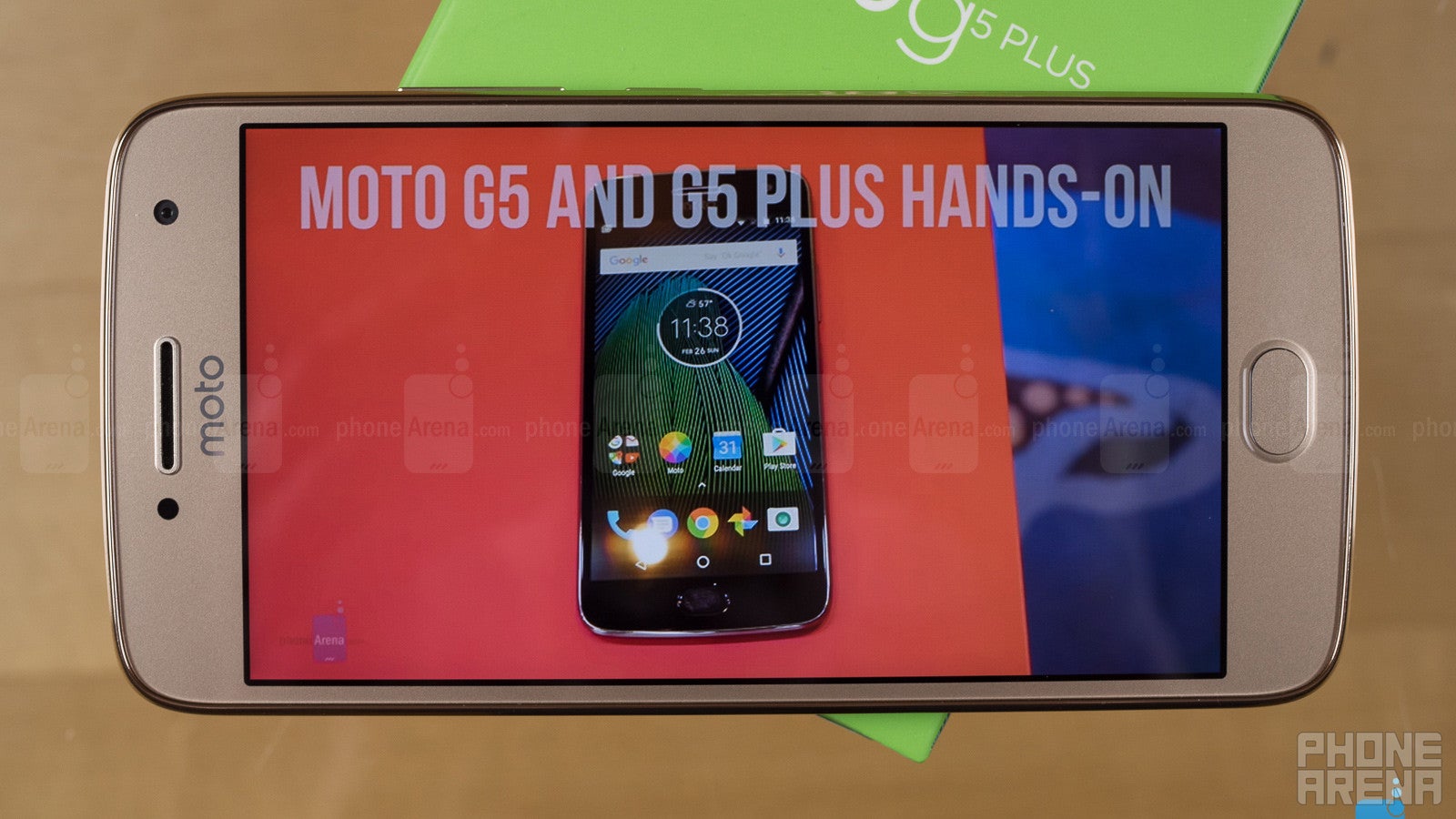
Maybe the only thing the speaker could really use (besides a second speaker for some stereo action, anyway) is better-balanced output, as we found audio pumping out of the Moto G5 Plus to be slightly too tinny and treble-rich (or maybe, bass-lacking) for our tastes.
Unlike the Moto Z lineup, the G-series isn't ready to ditch its analog headphone jacks just yet, and the G5 Plus arrives with a bottom-mounted jack – one blast from the past we're still very much happy to see.
Call Quality

Battery Life
The latest Moto G makes good on its reputation for multi-day battery life

When we pick up a phone running a Snapdragon 625, we're already expecting some solid battery life, and when you pair that with a 3,000mAh battery like we find in the Moto G5 Plus, we're looking forward to nothing short of day-long battery endurance.
That is absolutely what we got with the phone, and our custom battery tests gave us screen-on operation that came up just short of ten-and-a-half hours. Unless you're among the heaviest of heavy users, we'd say that very much falls under the all-day-battery banner.
Even with all that capacity, recharge times remain pleasantly swift, and the included Turbo Power charger brings the G5 Plus back to life in under two hours. Really, the only thing we could ask for would be wireless charging, but that's just an asterisk on otherwise very, very solid battery performance.
Conclusion
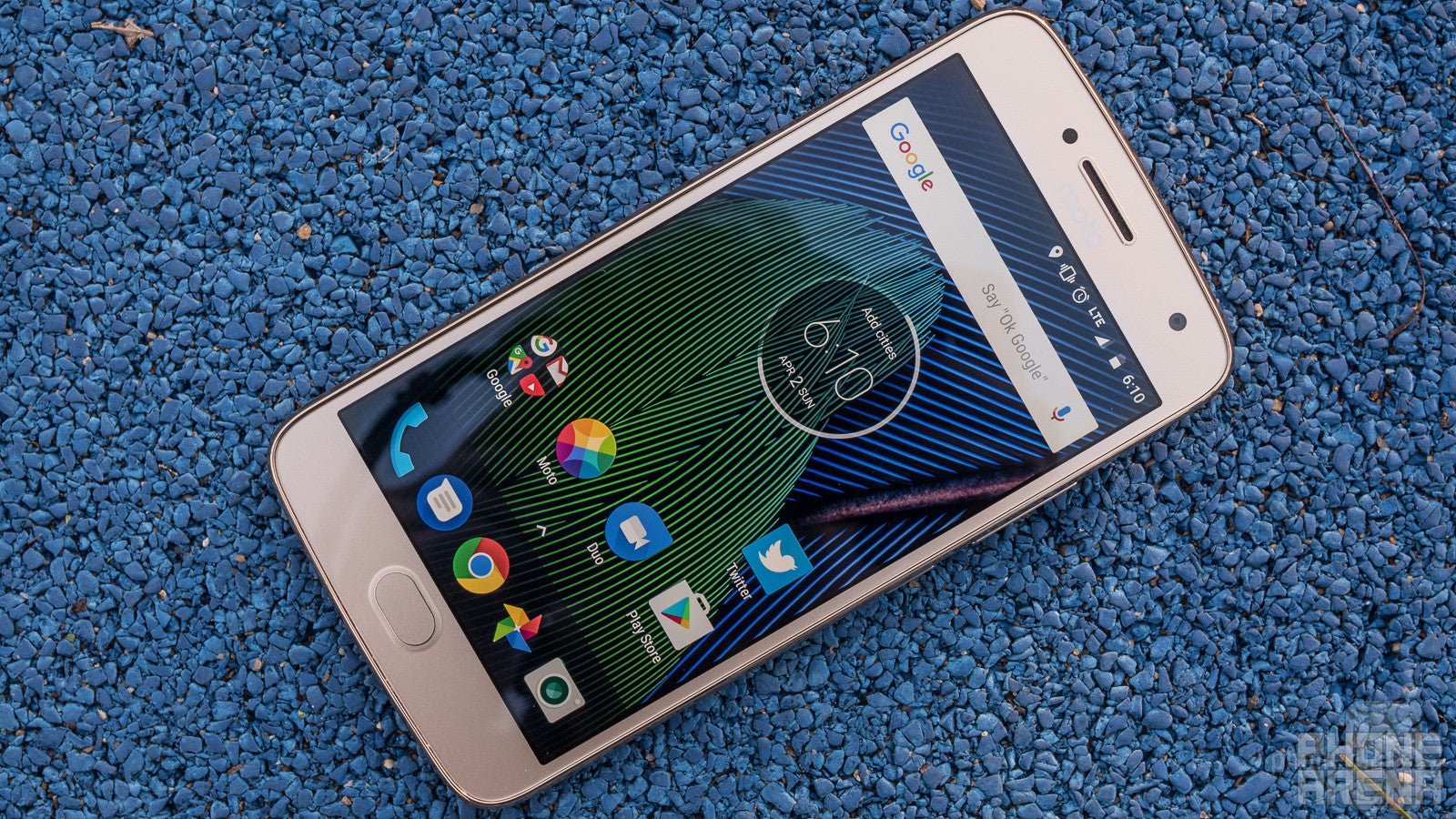
It's easy to pick up the very wrong impression that there's not much to look forward to in the mid-range smartphone space, like it's some dumping ground for leftover components, offers uninspired hardware design at best, and aims little higher than giving shoppers phone choices that are “good enough” without going much further.
But it takes little more than a phone like the Moto G5 Plus to remind you that even in this budget segment there's still tons of variety, and maybe more importantly than that, the opportunity for manufacturers to really impress. We're not qualifying that with “... on a budget,” either, and the Moto G5 Plus implements some features – like that very intuitive swipe-based fingerprint scanner navigation system – that we'd absolutely love to see on much more high-profile Motorola hardware.
The G5 Plus doesn't do everything right, and seems to have a little more potential than the hardware actually delivers on; that's probably most true when it comes to its camera. But it's also far, far removed from being a huge disappointment, and we imagine most shoppers will still be hugely satisfied with their purchases.
Speaking of those, you've got some choices to make when it comes to what you'll pay for the Moto G5 Plus. Buying an unlocked phone from the manufacturer, you'll pay about $230 for the 32GB/2GB model, or more like $300 for the the 64GB/4GB edition – and if you've got the cash to spend, we'd very much point in the direction of the latter.
If you also happen to be an Amazon Prime user, you've got another decision to make: consent to the presence of Amazon's ad-laden lockscreen, and you can save $45 or more compared to Lenovo's direct prices: so, $185 for 32GB, or even greater savings at $240 for 64GB. Maybe you'd rather pay more for the regular phone, but if you're already going to be seeing ads on the mobile web, and in ad-supported apps, Amazon's offer may not sound so objectionable – and those discounts make an already attractive phone just that much more appealing.





























Things that are NOT allowed: